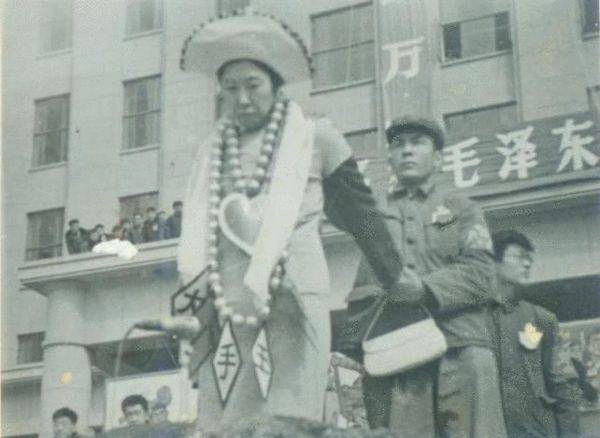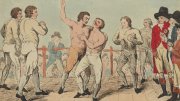Berlin. In 1910, German universities were the envy of the world. They were the world’s center of scientific research, not only in the natural sciences but also in the study of history, politics, philosophy and literature. Our modern scholarly disciplines were all first defined in Germany.
The University of Berlin, founded a century earlier, was the Harvard of its day. Every serious American university, from Hopkins to Chicago, to Harvard and Berkeley, was made or reformed according to the “Berlin model.” (Why else is Stanford’s motto in German?) Original research was prized over the mere transmission of knowledge. Faculty and students would learn together in seminars and laboratories. Professors would have Lehrfreiheit, or the freedom to teach, while student would enjoy Lernfreiheit, the freedom to learn across multiple disciplines. Although supported entirely by the state, universities themselves would decide who would teach and what would be taught. If in 1910 we had rankings of universities as we do today, perhaps eight of the top ten in the world would have been German—with only Oxford and Cambridge joining them in that elite circle.
As late as 1932, the University of Berlin remained the most famous site in the world of universities. By 1934, it had been destroyed from without and within.
Germany’s descent from a nation of “poets and thinkers” (Dichter und Denker) to one of “judges and hangmen” (Richter und Henker) came at the cost of its leadership in higher education. The impact of the new National Socialist regime that came to power in January 1933 became manifest on May 10 of that year, when the members of the German Student Union— among them many students from the University of Berlin—publicly piled and burned books from public libraries on the streets of Berlin’s Opernplatz, the square opposite the university’s main building. A crowd of seventy thousand, including students, professors, and members of the SA and SS—storm troopers for National Socialism—watched as thousands of volumes were torched.

In short order the Nazi regime purged universities of non-Aryan and dissident members. Leading scholars left Berlin in large numbers in a historic academic migration to the United States, Britain, and elsewhere. Universities lost any capacity for self-government. The University of Berlin abandoned its own traditions of teaching and research. Scholarship serving truth for truth’s sake was jettisoned for scholarship in service of the “Volk.”
The Nazi period would be followed in central Berlin by East German Communist orthodoxy and finally, in 1990, by absorption into the German Federal Republic—with each change accompanied by a new purge of faculty.
In 2010, at the 200th anniversary of the university—now named Humboldt University—its president welcomed guests by saying: “Today nobody anywhere in the world is prepared to take this university as a model.” Indeed. No longer the leading university in the world, Humboldt University today is not the best in Germany—not even the best in Berlin.
Beijing. In the first half of the 20th century, China developed a remarkable set of colleges and universities: a small system, but pound-for-pound one of the best and most innovative in the world. Its institutions were Chinese and foreign, public and private. The system was composed of leading state universities—Peking University in Beijing and National Central University (modeled on the University of Berlin) in Nanjing. Its leading private institutions often had international partners: Yenching University in Beijing; St. John’s University in Shanghai; Jinling University in Nanjing. Peking Union Medical College, with Rockefeller Foundation funding, had a global reputation.
Tsinghua University in Beijing began in 1911 as a prep school preparing students for study in America. By the 1930s, it was China’s leading research university, devoted to free and open inquiry. When the Japanese occupied Beijing in 1937, Tsinghua led the effort to relocate leading Chinese universities to China’s southwest. Some of Tsinghua’s most famous and innovative alumni, such as Nobel laureate physicists C. N. Yang (Yang Zhenning) and C. T. Li (Li Zhendao), completed their studies during this time. Tsinghua’s president and the leader of National Southwest University, Mei Yiqi, is still remembered today for his advocacy of liberal education, institutional autonomy, and academic freedom even in the darkest moments of the war. For that he is remembered as Tsinghua’s “eternal president.” In short, Tsinghuasurvived eight years of exile and war, and it stood firm by its academic values.
What it could not so easily survive was the Communist conquest of China in 1949. Tsinghua’s long-standing ties with the United States were severed, not to be resumed for three decades. Chinese universities were reordered along Stalinist lines and were rapidly Sovietized. A new Tsinghua campus arose next to the original one. Its thirteen-story Main Building, a brutal Stalinist complex of three structures, now dominated the campus. In 1952 Tsinghua became a polytechnic university to train engineers according to rigid state plans. The schools of sciences and humanities, agriculture, and law were all abolished, and their faculty members were scattered to other institutions. Faculty who would not or could not work under the new regime either fled abroad or were purged at home.
While Tsinghua began to train China’s communist technocracy, the relentless politicization of universities under Mao Zedong first weakened, and then nearly destroyed the university. During the Cultural Revolution of the 1960s it became the site of bloody clashes and shut down. The Cultural Revolution even destroyed Tsinghua’s iconic gate, replaced for a time by a huge statue of Mao, which was in turn supplanted by a replica of the original gate in 1991. Tsinghua resumed full operation, and even then on a skeletal basis, only in 1978. It would take until the centenary of the university, in 2011, for Tsinghua to reclaim its position as a leading, comprehensive, research university.

Boston. Harvard University began life in 1636 as a public institution. Its founder was not John Harvard but the General Court of Massachusetts. It was supported in the seventeenth century by taxes and “contributions” from as far south as New Haven, at times levied in corn, and by the revenues of the Charlestown ferry that connected Cambridge to Boston, paid in wampumpeag (the currency of the Massachusetts Bay Colony).
Founded one hundred and forty years before the United States, Harvard was nonetheless central to the creation of our nation. After the battles of Lexington and Concord in April 1775, the College’s Cambridge campus was given over to the Revolution. General George Washington set up his first headquarters in Wadsworth House, in Harvard Yard. On July 3, 1775, he rode out to Cambridge Common to take command of the Continental Army. Sixteen hundred colonial troops were quartered in Harvard’s buildings. On April 3, 1776, after Washington had driven the British from Boston, Harvard conferred upon him its first doctorate of law.
Harvard and the United States have been closely connected ever since. Memorial Hall was erected in the aftermath of the Civil War to honor the Harvard graduates and faculty who fought for the Union. Memorial Church was dedicated to those Harvard men who died for their country in World War I, and it has since memorialized all who died in World War II, the Korean War, and the Vietnam War.
During World War II, soldiers were again housed on Harvard’s campus and the University devoted itself to the war effort. Harvard faculty served the military effort in multiple ways. They developed advanced torpedoes for submarine warfare and the napalm used in the firebombing of enemy cities, and they assisted in creating the first atom bomb. They also provided intelligence. Numerous Harvard scholars joined the Office of Strategic Services (OSS), the precursor to the Central Intelligence Agency. Their collective work at OSS, organized in regional departments, formed the foundation of postwar “area studies” at Harvard and across the United States, supported by the Department of Defense. In the aftermath of the war, Harvard created a curriculum focused on General Education for a Free Society to give students “a common understanding of the society which they will possess in common,” a concept that would be adopted nationwide.
If the Vietnam War led, by contrast, to a Harvard sharply divided over the justness of that cause, in its wake Harvard created the Kennedy School of Government to prepare students for careers in public service—a leading center for the study and practice of government.
For nearly four centuries, the decisions and actions of Harvard set the tone for American higher education. Today Harvard has become what it was not during the Revolution, the Civil War, or even World War II: the leading research university in the world, with a reputation equal to, if not greater than, that of the University of Berlin in the nineteenth century. As it rose to national prominence in the twentieth century, universities across the United States vied to be the “Harvard of the South” (Duke, Vanderbilt, Rice), the “Harvard of the Midwest” (Michigan, Northwestern, Washington University), and the “Harvard of the West” (Stanford, once upon a time).
Yet today Harvard is an institution that may be more admired abroad than at home, in an era of public (and politicized) critique of American higher education. Forty-three of fifty U.S. states have disinvested in higher education since 2008. Leading public and private universities, including Harvard, have become lightning rods in the political and culture wars of the day.
Although the Trump administration’s multi-front assault on Harvard may be less violent (for now, at least) than the authoritarian takeovers of the University of Berlin or Tsinghua University, it is no less dangerous. It is an attempt to destroy the academic freedoms and institutional autonomy that have been hallmarks of every great modern university.
Fortunately, the United States is not (yet) Berlin in 1933 or Beijing in 1950. It retains an independent judiciary and rule of law, and it has, in Harvard, a university with the history, will, and resources to resist. In its resistance, Harvard has reaffirmed its leadership in American higher education as nothing else could. Should it fail, we shall witness the destruction of the one industry, higher education, in which this country is still number one. We shall destroy our capacity to recruit talent from all shores. We will decline. For history shows that universities can die, and nations will decay.
If American universities remain the envy of the world in 2025, the question must be: for how long?







